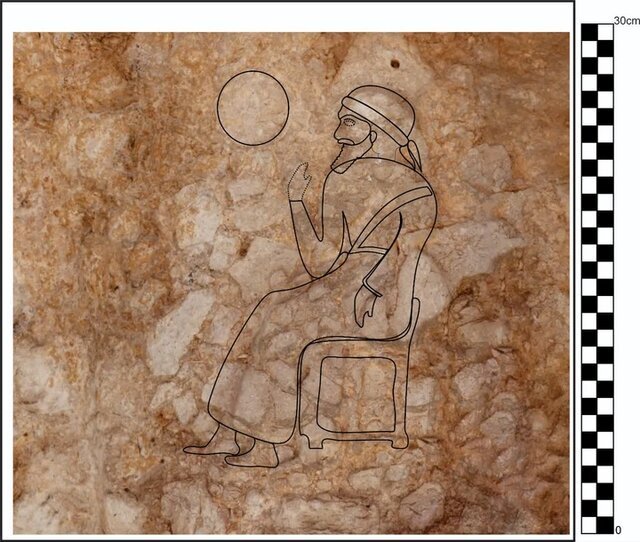4,000-year-old Elamite relief found in southwest Iran

TEHRAN – Archaeologists have identified a small Elamite relief in Izeh, Khuzestan province, depicting a king in prayer to a sun and justice deity, Iran’s Ministry of Cultural Heritage said on Tuesday.
The ministry said the relief, estimated to be about 4,000 years old, offers new insights into the religious traditions of Elam and its cultural links with Mesopotamia.
According to Hossein Feizi, a lecturer at the Susa Faculty of Archaeology, and Ayyoub Soltani, director of the Masjed Soleyman’s cultural heritage base, the discovery is considered the 13th Elamite bas-relief of Izeh, which can open a new horizon in finding the Elamite religious traditions and rock art.
Feizi, who is also an archaeologist, said that in the heart of the rocks of Izeh, a small but mighty work has emerged: the smallest Elamite relief ever discovered.
He added: “The carving, which is about the size of a palm, shows an Elamite king seated on a simple throne, his right hand raised in prayer before a symbol of the sun. Above his head is a complete disc carved with the symbol of the sun god Nahhunte, and in front of the figure is a stepped platform that appears to have been a place for offerings and ritual offerings.”
"The ancient Ayapir, was considered one of the important political centers in the Middle Elamite period (1500-1000 BC) due to its strategic location, water resources, and density of historical sites. Written sources from Susa also mention this region as a semi-independent city-state under Elamite rule.”
He continued: “This bas-relief is about 26 centimeters in size and is considered the smallest known Elamite specimen. Despite its limited dimensions, its composition and iconography have clear connections with other Elamite works such as the Kul-e Farah, Khong Ajdar, and Shahsavar reliefs.”
“Unlike most Elamite rock carvings, which are carved on uniform rocks, this work was conducted on a bed of heterogeneous conglomerate rock. This very characteristic, which distinguishes it, has also exposed it to severe erosion. Therefore, careful documentation, laser scanning, and photogrammetry are essential for the preservation and continuation of the work’s life.”
Analyzing the symbology value of the work, Faizi also said: “This rock carving not only introduces us to a manifestation of Elamite rock art and ritual traditions, but can also help to reconsider the history of Elamite art and its cultural relations with Mesopotamia.”
KD
Leave a Comment